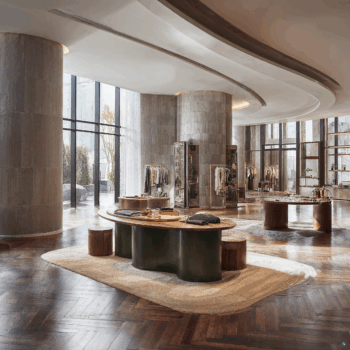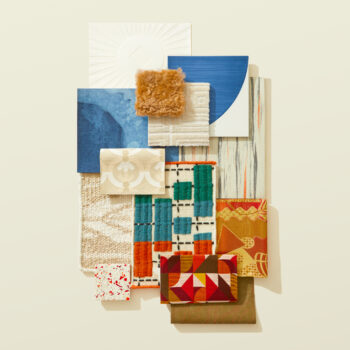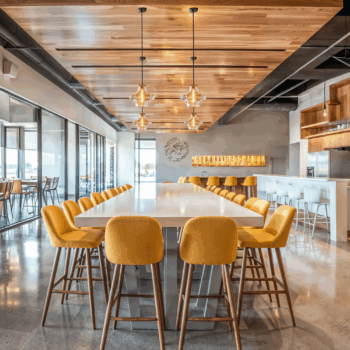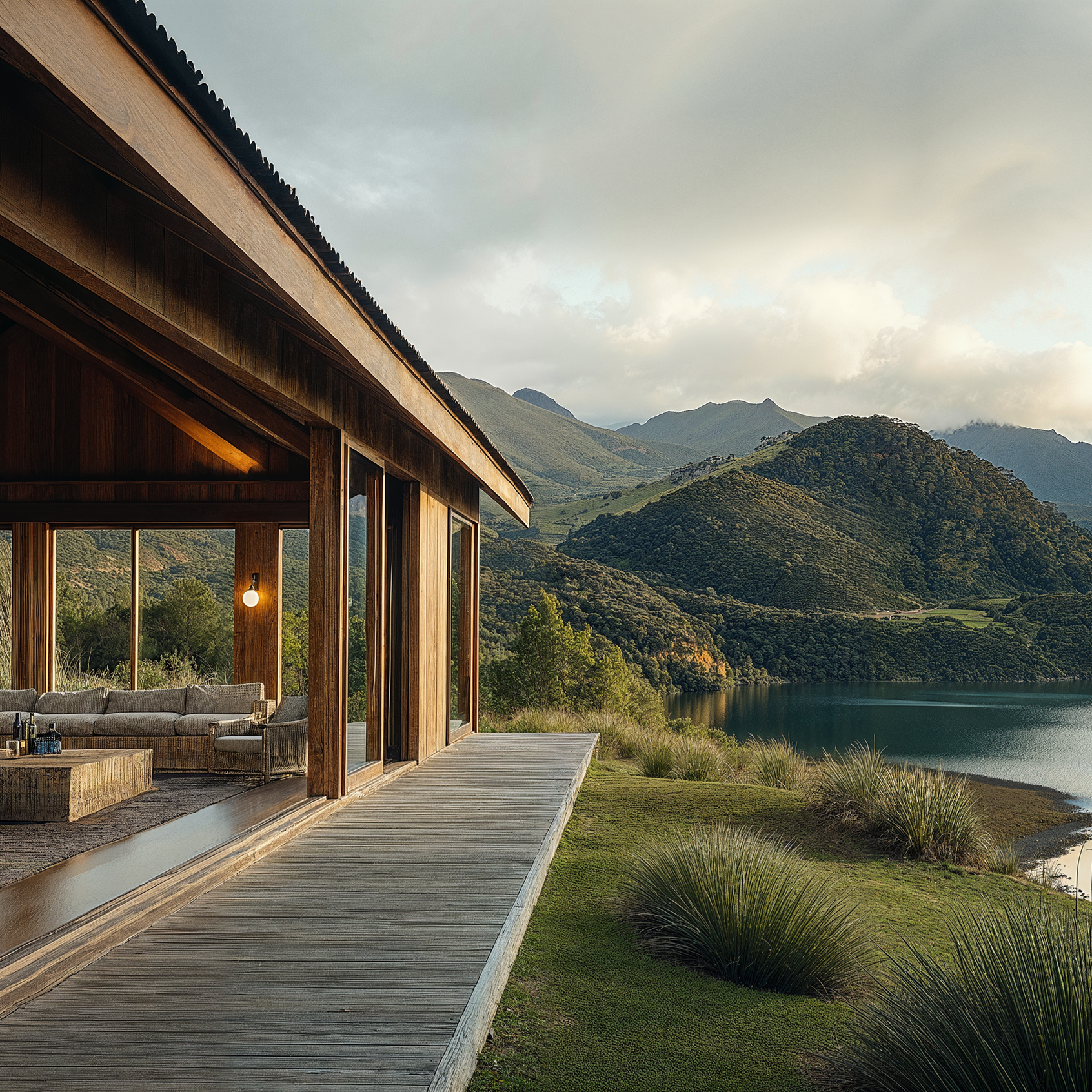
Māori design is more than form—it’s a living embodiment of cultural identity, passed down through generations across Aotearoa (New Zealand). Traditional structures, such as the wharenui (meeting house) and pātaka (storehouse), are rich with carved symbolism and aligned with the spiritual and environmental rhythms of this land. Carvings and weavings tell stories of ancestors, iwi (tribes), and whakapapa (lineage), while spatial planning reflects tikanga Māori, or cultural protocol.
In contemporary settings, Māori design continues to evolve—integrating traditional materials like timber, flax, and stone with modern technologies to create spaces that are culturally informed and environmentally grounded. Architects and designers across Aotearoa and the world are now embracing Māori principles to inform schools, civic centers, healthcare spaces, and more, using design as a platform for identity, inclusion, and care for the whenua (land).
The Core Principles of Māori Design
1.) Whakapapa (Ancestral Connection)
Architecture tells the stories of lineage, ancestry, and tribal identity through carving, patterning, and spatial narrative, fostering connection across generations.
2.) Whenua (Land-Based Design)
Buildings are designed in response to natural surroundings, respecting environmental rhythms and drawing from locally sourced, natural materials.
3.) Symbolism and Storytelling
Māori design incorporates rich patterning (kowhaiwhai), carving (whakairo), and weaving (raranga)—each symbol or motif carrying layered meanings linked to culture and cosmology.
4.) Manaakitanga (Care and Hospitality)
Spaces are organized around the principles of welcoming, generosity, and community, from marae layouts to modern gathering halls.
5.) Material Honesty and Sustainability
Traditional use of timber, harakeke (flax), stone, and earth informs today’s sustainable design practices, valuing durability, natural beauty, and environmental care.
Māori Design in Practice
Healing with Cultural Identity in Healthcare
Māori-inspired healthcare environments embrace natural clay finishes, thick walls, and ambient natural light to create a sense of calm and rootedness—supporting healing and connection.
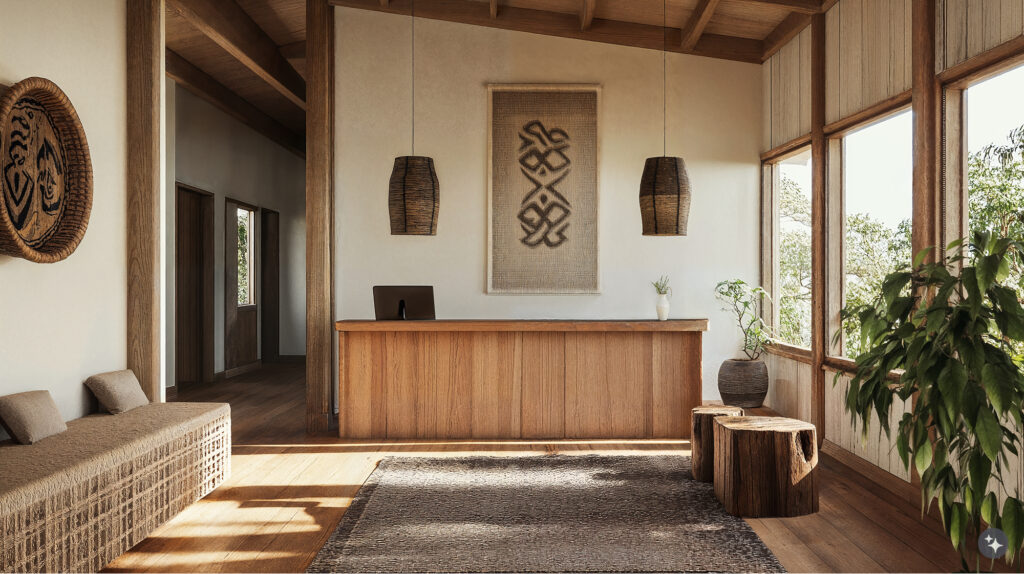
Workspaces that Reflect Whakapapa
Modern offices and institutions use patterned ceilings, sculptural timber forms, and gathering-centered layouts to reflect collaboration and ancestral grounding.
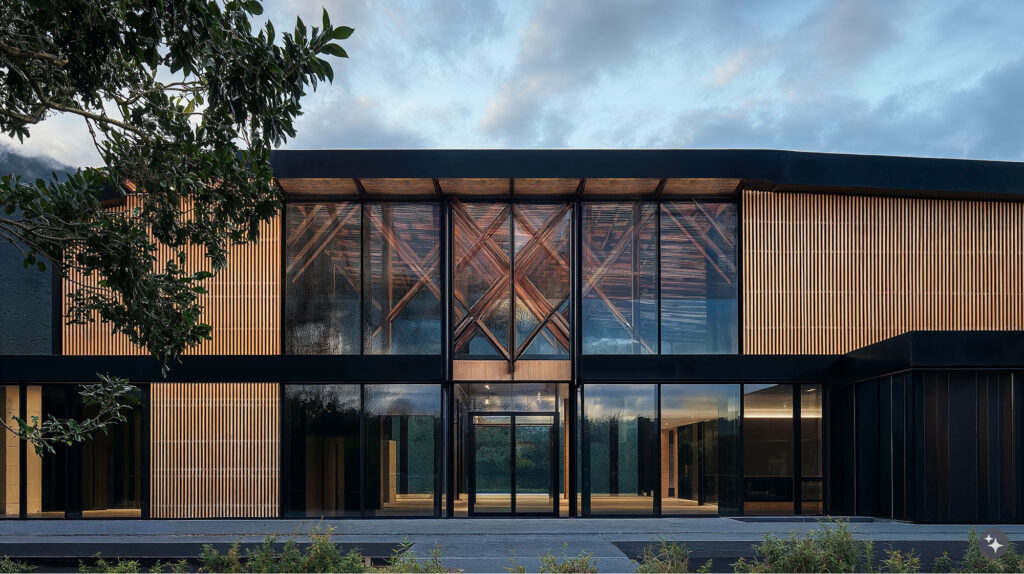
Educational Spaces with Cultural Resonance
Schools and learning centers integrate marae-inspired structures, bold carvings, and symbols of knowledge and protection, creating environments where students feel seen and connected.
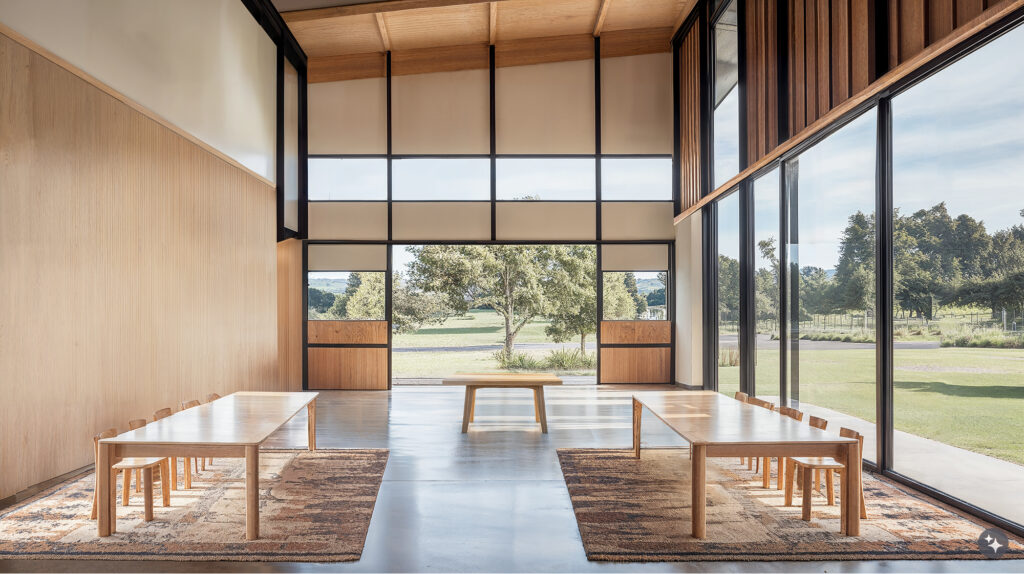
Hospitality Rooted in Manaakitanga
Hotels and lodges evoke Māori hospitality through organic materials, welcoming entryways, and symbolic design elements that honor cultural identity, creating immersive and respectful guest experiences.
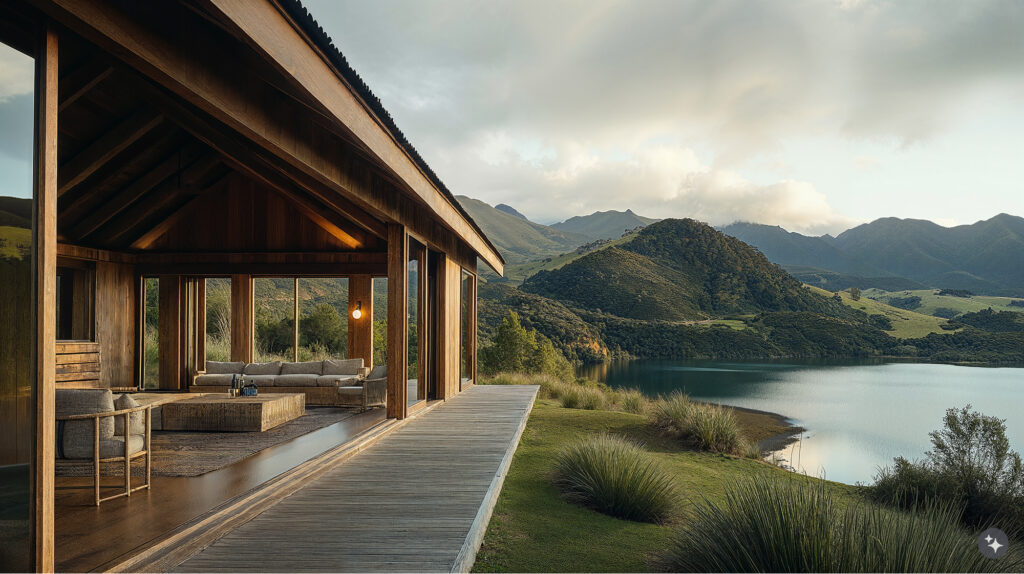
Cultural Centers that Tell Living Stories
Museums, galleries, and performing arts spaces showcase carved pou (posts), woven panels, and light-filled wharenui-inspired halls, reinforcing the continuity of story and space.
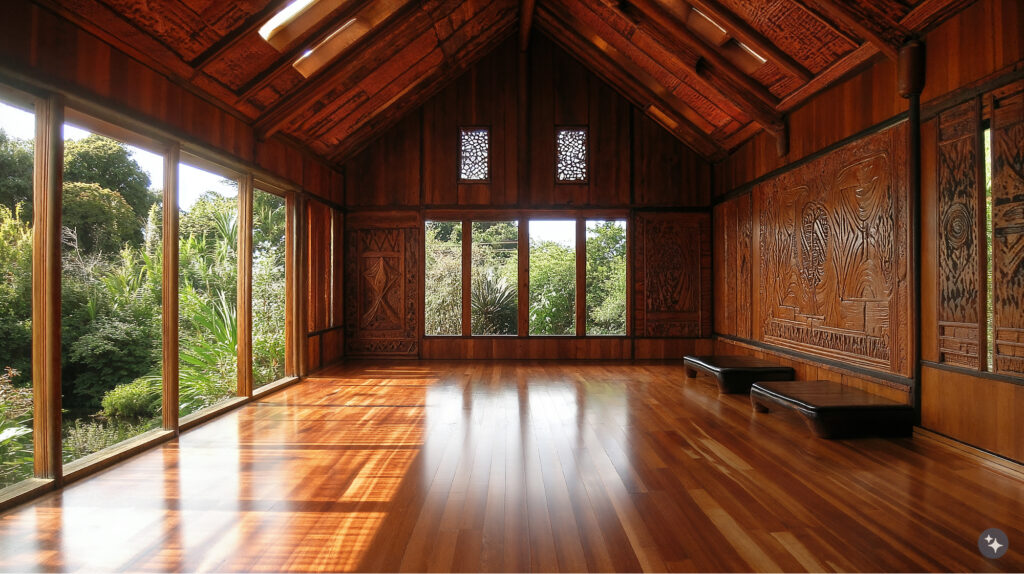
Retail Spaces with Crafted Identity
Shops use woven partitions, wood detailing, and light symbolic patternwork to enhance product storytelling and cultural context.
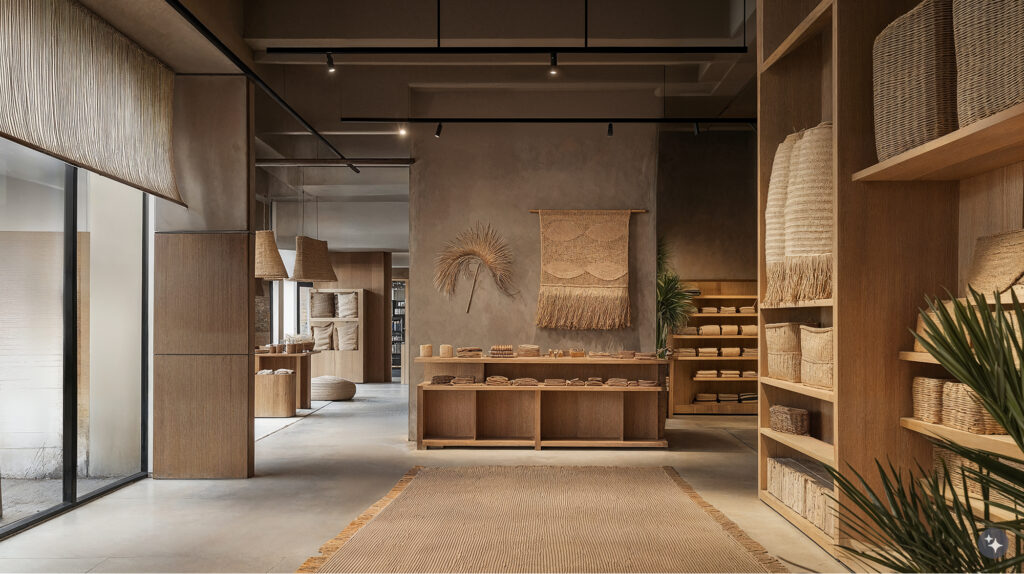
Residential Design with a Deep Sense of Place
Homes inspired by Māori design draw on warm timber tones, symbolic layouts, and outdoor-indoor flow to create private spaces that feel deeply rooted and familial.
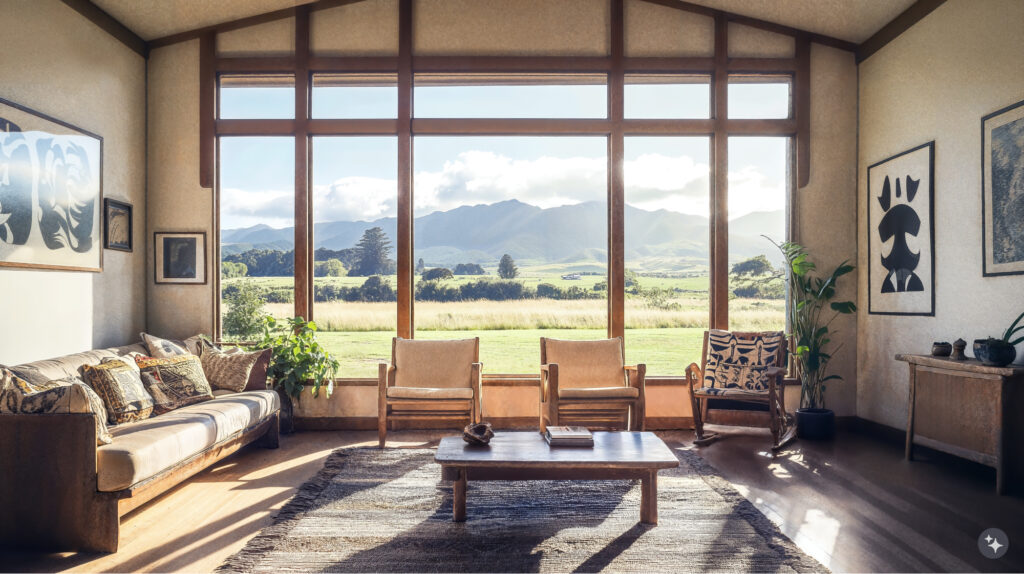
Māori design is not a trend—it’s a living, breathing expression of culture, resilience, and identity. When incorporated thoughtfully and with respect, its principles offer profound guidance for building environments that honor people, land, and story. In a world seeking authenticity and sustainability, Māori design offers a path forward—one shaped by heritage, harmony, and whanaungatanga (connectedness).
Looking for more indoor-outdoor design inspiration. Check out our article on Jungle Glamping Tents.





